
|

1984 RECIPIENT
William Hazzard — Wood Carver
About the craftsperson
|
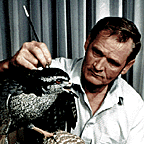
|
"Before Bill even picks up his carving tools he'll spend a lot of time
going on field trips, examining study skins in museums and checking
photographs to come up with a composition that is unique. By thoroughly
researching his project, Bill feels that he can make the carving more
lifelike. Bill has told me he thinks about every bone and feather when
carving and what the bird's relationship is to its environment. Bill says
his object is to recreate the bird with flow, balance and realism."
Roger W. Jones
Raptor Bander
Falls Church, Virginia
|
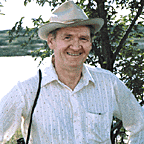
|
Self-taught wood carving may seem a world away from the guild craft of
metalsmithing. But perfection of skills is also the goal of Saskatchewan
wildlife carver William Hazzard, whose self-taught origins typify a third
means of acquiring craft skills in Canada. Hazzard's introduction into the
craft world was fortuitous; his success, though, has been remarkable.
As a young man, Hazzard enjoyed sketching the wildlife of rural
Saskatchewan, where he grew up, and he took pride in the fact that his
drawings were good likenesses of his subjects. Many years later, during a
long and confining convalescence in 1972-73, Hazzard looked for useful work
to occupy his hands.
|
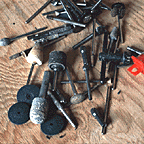
|
I was looking for something in the arts. I didn't know if it was going to
be carving or painting.... My wife said, "Why don't you go down and do
some carving, or something; you like working with wood." So that's when I
started studying birds and started carving.
He carved his first wooden bird in his basement workshop from a
reproduction of a poorly painted picture of a hawk. Later, he began to
sketch birds in the field, study stuffed mounts and birdskins, and emulate
the wildlife carvings of Bernie Smith, a talented local craftsman. With
less than four years of carving experience, he was coaxed into submitting
some of his own work to the international carving competition in Maryland.
Hazzard left with fifteen ribbons in the novice class of wildlife carving.
Since those early days, he has been awarded a roomful of trophies and
plaques, and his carvings have travelled the globe as part of a prestigious
world tour of nature art.
|
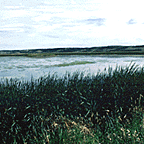
|
Public interest in Hazzard's wildlife carvings appears to be part of a much
larger contemporary fascination with accurate depictions of wildlife. This
fascination may in turn derive from a universal nostalgia for the rapidly
diminishing wilderness, new public awareness of ecological issues, and the
immediate appeal of wildlife art. In spite of its popularity, and perhaps
in part because of it, wildlife art has little status in conventional
fine-art circles, where it is sometimes viewed as illustrative or
representational and lacking in interpretive or spiritual dimensions.
|
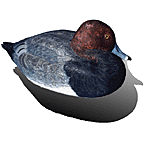 |
Decoy, 1976
Image used with permission of the artist
Archives - Box 607, F3
|

|
|
It is true that the interpretive freedom of the wildlife carver can be
inhibited by the rigid rules imposed by competitions, which can include
three classes of carvers, up to seven judging categories, and as many as
three thousand entrants. And there can be little discussion of carving and
painting techniques with other carvers, owing to the fierce competition
for recognition. Despite these constraints, international carving
competitions have motivated hobbyists such as Hazzard to develop their own
style and to experiment with new techniques to more skilfully depict
wildlife in wood. It is this challenge to make "a better bird" that
sustains William Hazzard's creative vitality.
|
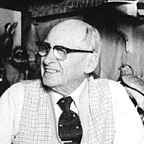
|
Bernie Smith, a wildlife carver of
Mossbank, Saskatchewan, 1986,
whose work first inspired William Hazzard
to perfect his own carving skills
|

|
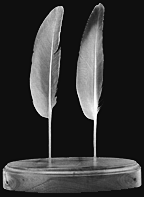
|
Feather Pair, 1985
A Mallard Duck feather mounted
with a wooden replica hand-carved by
William Hazzard for a competition
category that tests the carver's ability
to achieve realism (Hazzard's feather is
on the left)
Basswood
16.4 cm x 13.0 cm x 8.1 cm
CMC 86-100 (Bronfman)
|

|

